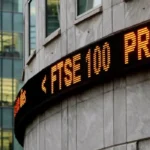Yesterday’s trade saw EUR/GBP within the range of 0.7609-0.7694. The pair closed at 0.7627, losing 0.69% on a daily basis.
At 7:18 GMT today EUR/GBP was unchanged for the day to trade at 0.7627. The pair touched a daily low at 0.7622 during early Asian trade.
Fundamentals
United Kingdom
Bank of England minutes
At 9:30 GMT the Bank of England is expected to publish the minutes from its most recent policy meeting. Released two weeks after the meeting itself, the minutes provide a full account of the policy discussion, including differences of view. They also record the votes of the individual members of the Monetary Policy Committee (MPC). On January 8th 7 members of the Committee probably voted in favor of keeping the benchmark interest rate unchanged, while 2 members probably supported a rate hike. In addition, all 9 members of the Committee probably voted to keep the stock of purchased assets financed by the issuance of central bank reserves unchanged at £375 billion. In case the central bank demonstrates a hawkish view in regard to inflation pressure and overall economic activity in the UK, this heightens the probability of an interest rate hike, which has a positive effect on the pound. A dovish view, on the other hand, will have the opposite effect.
Claimant Count Change, ILO Unemployment Rate
The number of jobless claims in the United Kingdom probably dropped by 25 000 in December, marking the 27th consecutive month of declines, according to expectations, following another drop by 26 900 in November. At the same time, the claimant count rate, which represents the percentage change of jobless claims compared to the entire work force, probably fell to 2.6% in December from 2.7% during the previous month. If so, this would be the lowest claimant count rate since June 2008.
The rate of unemployment in the UK, estimated in accordance with ILO (International Labour Organization) standards, probably decreased to 5.9% during the three months to November compared to the same period a year ago, from 6.0% in the three months to October. If so, this would be the lowest rate since October 2008.
During the period August-October there were 30.80 million people in employment, or an increase by 115 000 compared to the period May-July and also 588 000 more compared to August-October a year earlier. There were 22.54 million people in full-time employment, or 560 000 more compared to the same period a year earlier, while 8.25 million people were working part-time during the three months to October, an increase by 28 000 compared to a year earlier. During the period August-October 1.96 million people were unemployed, or 63 000 fewer than in the period May to July and 455 000 fewer compared to August-October 2013.
In August to October there were 9.06 million people aged between 16 and 64, who were out of work and not seeking or available for employment, according to data by the Office for National Statistics (ONS). This represented a little change compared to May-July 2014 and August-October 2013.
The rate of unemployment refers to the percentage of economically active people, who are currently unemployed. According to the ILO approach, people who are considered as unemployed are either: 1) out of work, but are actively searching for employment, or 2) out of work and are waiting to be hired again during the next two weeks.
The ILO Unemployment Rate is based on a monthly survey, known as the Labour Force Survey in the United Kingdom, with approximately 40 000 individuals being interviewed every month. This indicator reflects overall economic state in the country, as there is a strong correlation between consumer spending levels and labor market conditions. Low rates of unemployment are accompanied by higher spending, which causes a favorable effect on corporate profits and also accelerates overall growth. In case the rate of unemployment fell more than projected, this would certainly have a bullish effect on the sterling. The official report by the ONS is due out at 9:30 GMT.
Pivot Points
According to Binary Tribune’s daily analysis, the central pivot point for the pair is at 0.7643. In case EUR/GBP manages to breach the first resistance level at 0.7678, it will probably continue up to test 0.7728. In case the second key resistance is broken, the pair will probably attempt to advance to 0.7763.
If EUR/GBP manages to breach the first key support at 0.7593, it will probably continue to slide and test 0.7558. With this second key support broken, the movement to the downside will probably continue to 0.7508.
The mid-Pivot levels for today are as follows: M1 – 0.7533, M2 – 0.7576, M3 – 0.7618, M4 – 0.7661, M5 – 0.7703, M6 – 0.7746.
In weekly terms, the central pivot point is at 0.7687. The three key resistance levels are as follows: R1 – 0.7783, R2 – 0.7929, R3 – 0.8025. The three key support levels are: S1 – 0.7541, S2 – 0.7445, S3 – 0.7299.





